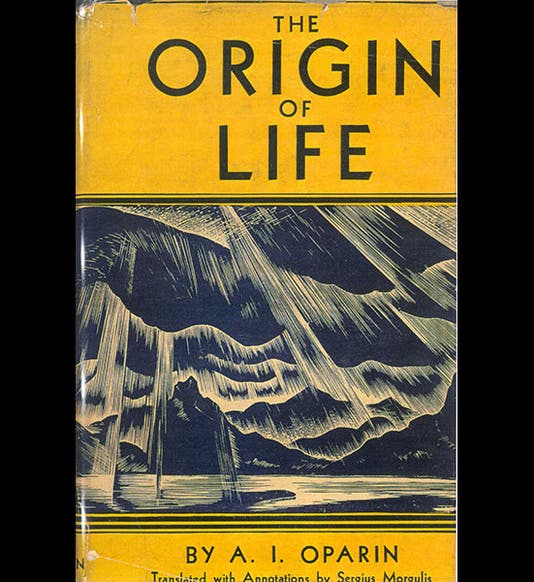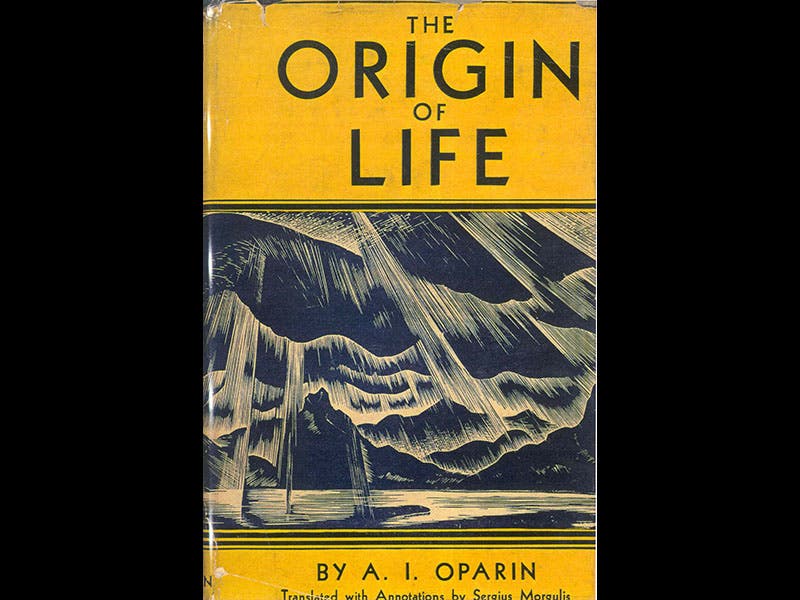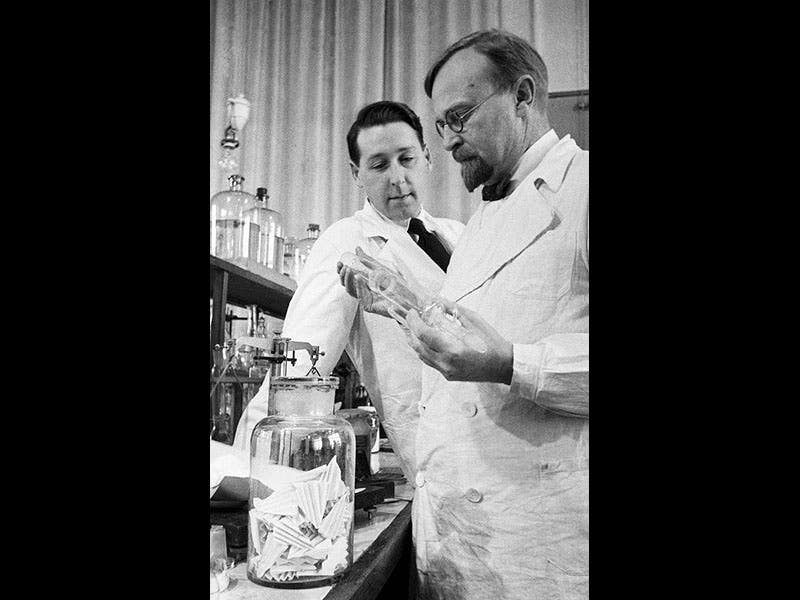Scientist of the Day - Aleksandr Oparin
Aleksandr Oparin, a Russian biochemist, was born Mar. 2, 1894. In 1924, Oparin published a short monograph, Proiskhozhdenie zhizny (The Origin of Life), in which he discussed the question of the origin of life on earth. Many eminent biologists, physicists, and chemists had considered the problem, from Darwin and Helmholtz on down, usually to dismiss it as an unsolvable conundrum, or to assert flatly that living things were so different from non-living things that there is no way that life arose from inorganic matter. Oparin simply dove on in and tried to sort out the defining features of living things, and then, with list in hand, asked which features of living things were never found in inorganic nature. His answer was: none. There is not a property of livings things, from metabolism, reaction stimulus, and reproduction, that cannot be identified in the inorganic world or in machines. Therefore, and now we quote: "Life is not characterized by any special properties, but by a definite specific combination of these properties," and there is no reason whatsoever why life could not have arisen by a natural process on Earth.
Oparin was very limited in the way he could approach the problem in 1924--biochemistry barely existed, enzymes were just beginning to be understood; and ideas about conditions on the early earth were quite primitive. Nevertheless, Oparin pointed out the difference between crystalloids and colloids, and how colloids more closely resemble what was called back then "protoplasm," and he further proposed that perhaps "coacervates"--small spherical forms that arise naturally --might have been the forerunner to the simple bacterial cell. Oparin is acknowledged by all modern workers on the origin of life as the man who created the field, by defining a scientific problem that could be attacked experimentally. When Stanley Miller created the first organic molecules from inorganic materials in the laboratory in 1953, he was essentially carrying out a research program that had been laid out by Oparin.
Oparin’s paper of 1924 was not translated into English until 1967. But in 1936, he wrote a larger book that did appear, in English translation, in 1938, called The Origin of Life. The colorful dust jack appears to have been designed by Rockwell Kent (first image). Oparin lived long enough (to age 86) to become very well-known and well photographed; two of our favorites show him in the lab (second image), and at leisure (third image).
Dr. William B. Ashworth, Jr., Consultant for the History of Science, Linda Hall Library and Associate Professor, Department of History, University of Missouri-Kansas City. Comments or corrections are welcome; please direct to ashworthw@umkc.edu.







![Using an astrolabe to measure the depth of a well, woodcut in Elucidatio fabricae vsusq[ue] astrolabii, by Johannes Stöffler, 1513 (Linda Hall Library)](https://preview-assets-us-01.kc-usercontent.com:443/9dd25524-761a-000d-d79f-86a5086d4774/a998eb50-55d2-4a88-ace2-a50aa5fa86e7/Stoffler%201.jpg?w=210&h=210&auto=format&fit=crop)

